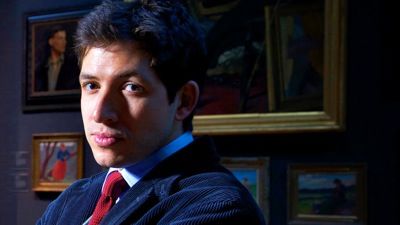British Masters
We Are Making a New World (1x1)
: 11, 2011
In a major re-calibration of 20th-century British paintings, art historian James Fox argues that British painting from 1910 to 1975 was an extraordinary flowering of genius. He predicts that art historians of the future will rank the period alongside the Golden Ages of Renaissance Italy and Impressionist France.
Drawing upon the work of Paul Nash, Graham Sutherland, Francis Bacon, Stanley Spencer and David Hockney, among others, Fox explores why, during the 20th century, British painters were often dismissed for being old-fashioned. He reveals how these artists carefully reconciled tradition and modernity, providing a unique creative tension that now makes the period seem so exciting.
Over the course of the three-part series, Fox presents his theory that this period of artistic excellence was closely linked to a dramatic shift in Britain's fortunes. He suggests that the demise of the British Empire, as much as the two world wars, defines Britain's unique take on modern art: a determination to rediscover and cling on to 'Britishness' while the country's territorial assets and global influence fell away.
In the years immediately before and during the First World War, a radical generation of painters determined to eject Victorian sentimentality and nostalgia from their art pioneered a new style of painting that would capture and make sense of the modern experience. Walter Sickert shocked the public by making the low-lives of Camden Town and a brutal murder the subject of his gaze. Wyndham Lewis and David Bomberg broke with centuries of realist tradition, reducing humanity to cold geometric forms. But as the country descended into war, three painters - Christopher Nevinson, Paul Nash and Stanley Spencer - reconciled what was best of the avant-garde with Britain's rich painterly tradition to create powerful images of war that would speak to us all.
